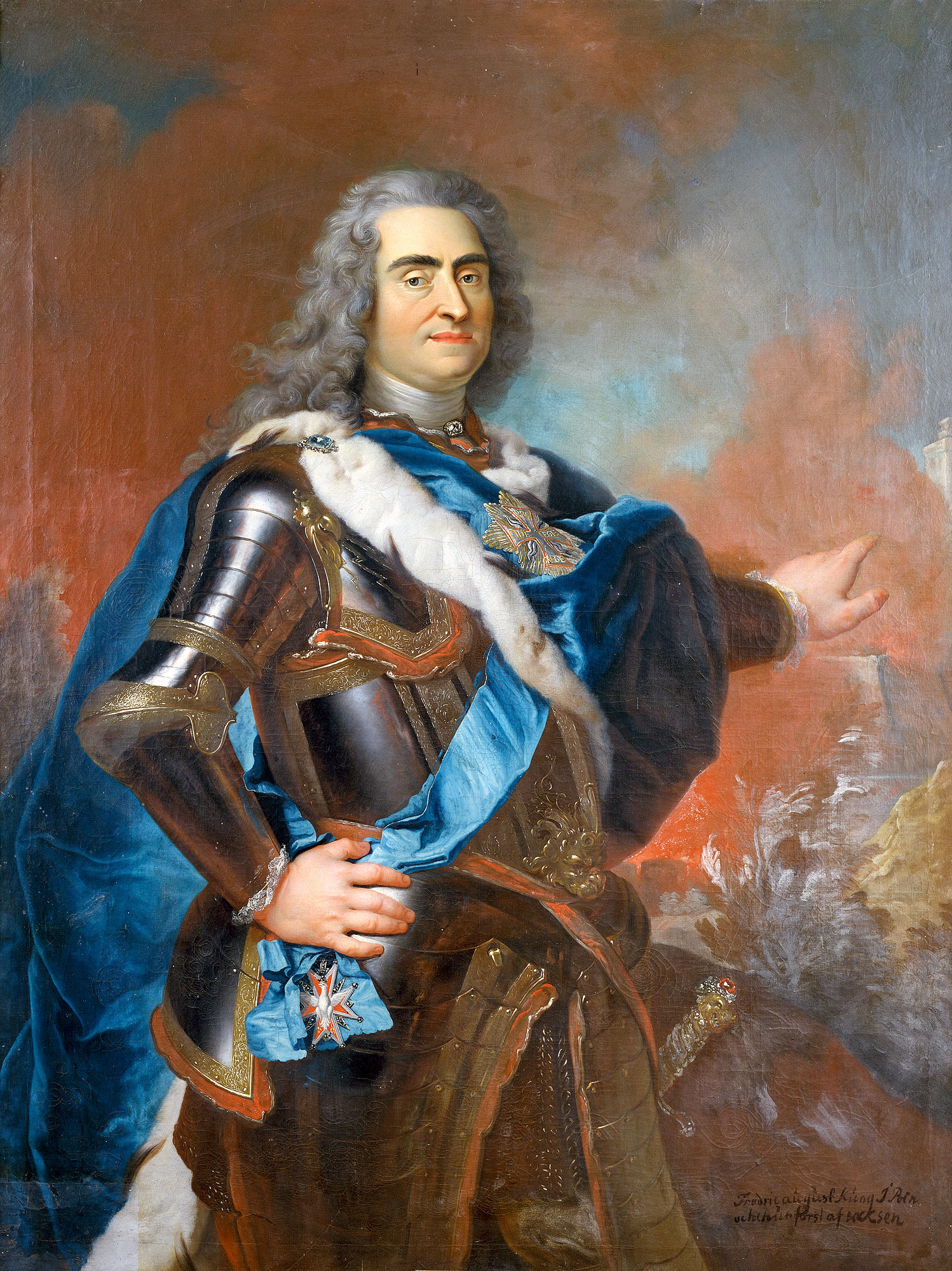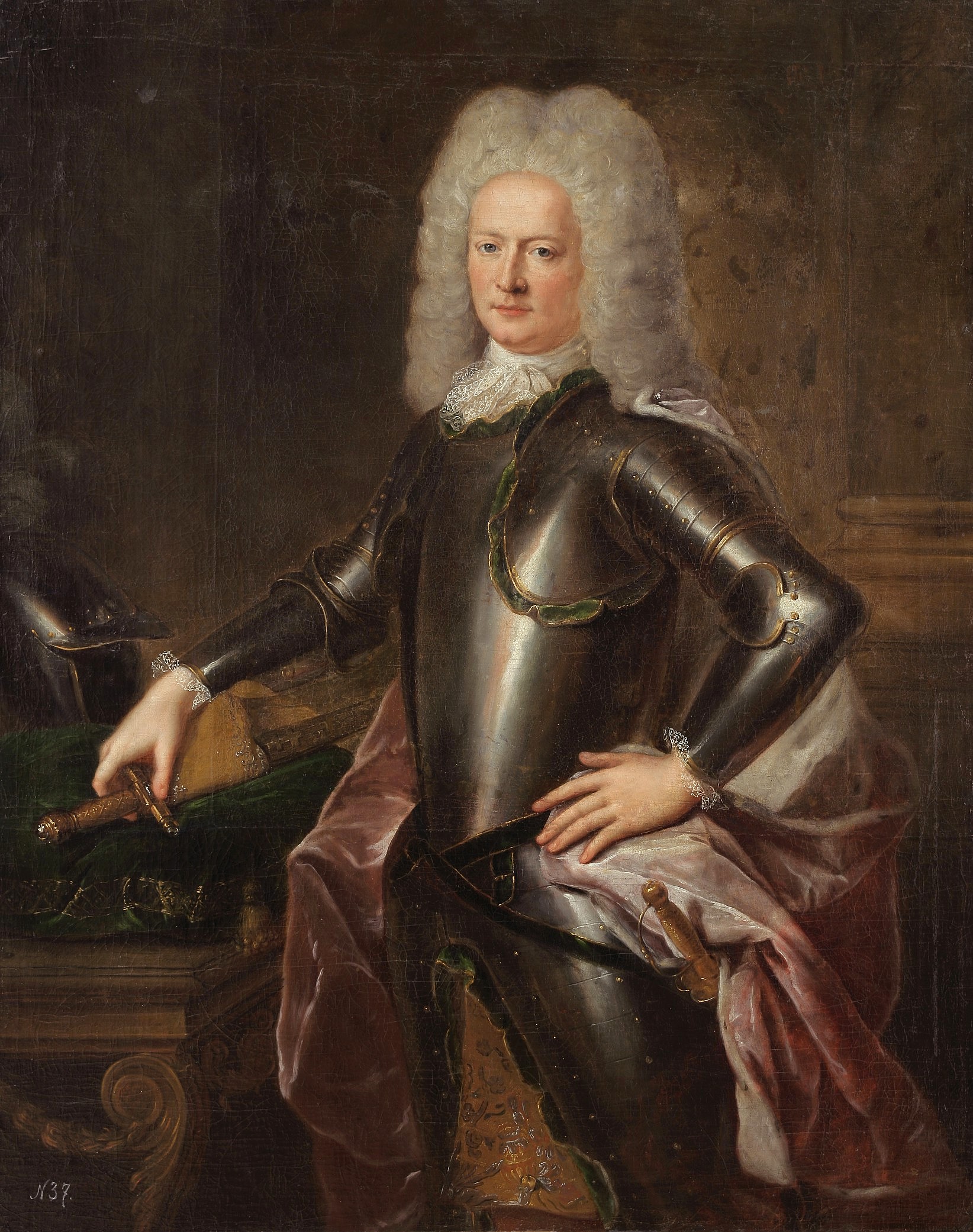|
Silent Sejm
Silent Sejm ( pl, Sejm Niemy; lt, Nebylusis seimas), also known as the Mute Sejm, is the name given to the session of the Sejm parliament of the Polish–Lithuanian Commonwealth of 1 February 1717 held in Warsaw. A civil war in the Commonwealth was used by the Russian Tsar Peter the Great as an opportunity to intervene as a mediator. It marked the end of Augustus II of Poland's attempts to create an absolute monarchy in Poland, and the beginning of the Russian Empire's increasing influence and control over the Commonwealth. Background Augustus II the Strong of the Saxon House of Wettin was elected to the throne of Poland in 1697. The Wettins, used to absolute rule, attempted to govern through intimidation and the use of force, which led to a series of conflicts between Wettin supporters and opponents (including another pretender to the Polish throne, King Stanisław Leszczyński). Those conflicts often took the form of confederations – legal rebellions against the king ... [...More Info...] [...Related Items...] OR: [Wikipedia] [Google] [Baidu] |
Sejm
The Sejm (English: , Polish: ), officially known as the Sejm of the Republic of Poland (Polish: ''Sejm Rzeczypospolitej Polskiej''), is the lower house of the bicameral parliament of Poland. The Sejm has been the highest governing body of the Third Polish Republic since the transition of government in 1989. Along with the upper house of parliament, the Senate, it forms the national legislature in Poland known as National Assembly ( pl, Zgromadzenie Narodowe). The Sejm is composed of 460 deputies (singular ''deputowany'' or ''poseł'' – "envoy") elected every four years by a universal ballot. The Sejm is presided over by a speaker called the "Marshal of the Sejm" (''Marszałek Sejmu''). In the Kingdom of Poland, the term "''Sejm''" referred to an entire two-chamber parliament, comprising the Chamber of Deputies ( pl, Izba Poselska), the Senate and the King. It was thus a three-estate parliament. The 1573 Henrician Articles strengthened the assembly's jurisdiction, makin ... [...More Info...] [...Related Items...] OR: [Wikipedia] [Google] [Baidu] |
Great Northern War
The Great Northern War (1700–1721) was a conflict in which a coalition led by the Tsardom of Russia successfully contested the supremacy of the Swedish Empire in Northern, Central and Eastern Europe. The initial leaders of the anti-Swedish alliance were Peter I of Russia, Frederick IV of Denmark–Norway and Augustus II the Strong of Saxony– Poland–Lithuania. Frederick IV and Augustus II were defeated by Sweden, under Charles XII, and forced out of the alliance in 1700 and 1706 respectively, but rejoined it in 1709 after the defeat of Charles XII at the Battle of Poltava. George I of Great Britain and the Electorate of Hanover joined the coalition in 1714 for Hanover and in 1717 for Britain, and Frederick William I of Brandenburg-Prussia joined it in 1715. Charles XII led the Swedish army. Swedish allies included Holstein-Gottorp, several Polish magnates under Stanislaus I Leszczyński (1704–1710) and Cossacks under the Ukrainian Hetman Ivan Mazepa (1708–17 ... [...More Info...] [...Related Items...] OR: [Wikipedia] [Google] [Baidu] |
Marshal Of The Sejm
The Marshal of the Sejm , also known as Sejm Marshal, Chairman of the Sejm or Speaker of the Sejm ( pl, Marszałek Sejmu, ) is the Speaker (politics), speaker (chairperson, chair) of the Sejm, the lower house of the Parliament of Poland, Polish Parliament. The office traces its origins to the 15th century. In modern Poland, the full title is Marshal of the Sejm of the Republic of Poland (). Related historical offices The Polish–Lithuanian Commonwealth also had an office of Sejmik Marshal. In the Kingdom of Galicia and Lodomeria, from 1861, the chairman of the Province Sejm of Galicia, Provincial Sejm of Galicia with its seat at Lwów bore the title Marszałek krajowy (Province Marshal). The Kingdom of Poland (1916–1918), Kingdom of Poland, from 1916 to 1918, used the title Marszałek Rady Stanu (Marshal of the State Council). In the Second Polish Republic (1918–1939), the Legislator, deputies elected one of their number as Marshal of the Sejm for the duration of the Sejm ... [...More Info...] [...Related Items...] OR: [Wikipedia] [Google] [Baidu] |
Confederated Sejm
Confederated sejm () was a form of sejm in the Polish–Lithuanian Commonwealth in the 18th century. After 1764, sejms were frequently ''confederated''. Under rules of confederation, decisions were made by the majority of deputy votes cast, and so the privilege of liberum veto did not apply. Examples of confederated Sejms: Repnin Sejm, Great Sejm. See also * Confederation * ''Sejmik'' * '' Liberum veto'' * Constitution of May 3, 1791 The Constitution of 3 May 1791,; lt, Gegužės trečiosios konstitucija titled the Governance Act, was a constitution adopted by the Great Sejm ("Four-Year Sejm", meeting in 1788–1792) for the Polish–Lithuanian Commonwealth, a dual mo ... Polish confederations Sejm of the Polish–Lithuanian Commonwealth {{Legislature-stub ... [...More Info...] [...Related Items...] OR: [Wikipedia] [Google] [Baidu] |
Grigori Dolgorukov
Grigory, Grigori and Grigoriy are Russian masculine given names. It may refer to watcher angels or more specifically to the egrḗgoroi or Watcher angels. Grigory * Grigory Baklanov (1923–2009), Russian novelist * Grigory Barenblatt (19272018), Russian mathematician * Grigory Bey-Bienko (1903–1971), Russian entomologist * Grigory Danilevsky (1829–1890), Russian novelist * Grigory Falko (born 1987), Russian swimmer * Grigory Fedotov (1916–1957), Soviet football player and manager * Grigory Frid (1915–2012), Russian composer * Grigory Gagarin (1810–1893), Russian painter and military commander * Grigory Gamarnik (born 1929), Soviet wrestler * Grigory Gamburtsev (1903–1955), Soviet seismologist * Grigory Ginzburg (1904–1961), Russian pianist * Grigory Grum-Grshimailo (1860–1936), Russian entomologist * Grigory Gurkin (1870–1937), Altay landscape painter * Grigory Helbach (1863–1930), Russian chess master * Grigory Kiriyenko (born 1965), Russian fencer * Grigor ... [...More Info...] [...Related Items...] OR: [Wikipedia] [Google] [Baidu] |
Poznań
Poznań () is a city on the River Warta in west-central Poland, within the Greater Poland region. The city is an important cultural and business centre, and one of Poland's most populous regions with many regional customs such as Saint John's Fair (''Jarmark Świętojański''), traditional Saint Martin's croissants and a local dialect. Among its most important heritage sites are the Renaissance Old Town, Town Hall and Gothic Cathedral. Poznań is the fifth-largest and one of the oldest cities in Poland. As of 2021, the city's population is 529,410, while the Poznań metropolitan area (''Metropolia Poznań'') comprising Poznań County and several other communities is inhabited by over 1.1 million people. It is one of four historical capitals of medieval Poland and the ancient capital of the Greater Poland region, currently the administrative capital of the province called Greater Poland Voivodeship. Poznań is a center of trade, sports, education, technology and touri ... [...More Info...] [...Related Items...] OR: [Wikipedia] [Google] [Baidu] |
Wielkopolska
Greater Poland, often known by its Polish name Wielkopolska (; german: Großpolen, sv, Storpolen, la, Polonia Maior), is a historical region of west-central Poland. Its chief and largest city is Poznań followed by Kalisz, the oldest city in Poland. The boundaries of Greater Poland have varied somewhat throughout history. Since the Middle Ages, Wielkopolska proper has been split into the Poznań and Kalisz voivodeships. In the wider sense, it also encompassed Sieradz, Łęczyca, Brześć Kujawski and Inowrocław voivodeships, which were situated further eastward. After the Partitions of Poland at the end of the 18th century, Greater Poland was incorporated into Prussia as the Grand Duchy of Posen. The region in the proper sense roughly coincides with the present-day Greater Poland Voivodeship ( pl, województwo wielkopolskie). Like the historical regions of Pomerania, Silesia, Mazovia or Lesser Poland, the Greater Poland region possesses its own distinctive folk costumes, ... [...More Info...] [...Related Items...] OR: [Wikipedia] [Google] [Baidu] |
Zamość
Zamość (; yi, זאמאשטש, Zamoshtsh; la, Zamoscia) is a historical city in southeastern Poland. It is situated in the southern part of Lublin Voivodeship, about from Lublin, from Warsaw. In 2021, the population of Zamość was 62,021. Zamość was founded in 1580 by Jan Zamoyski, Grand Chancellor of Poland, who envisioned an ideal city. The historical centre of Zamość was added to the World Heritage List in 1992, following a decision of the sixteenth ordinary session of the World Heritage Committee, held between 7 and 14 December 1992 in Santa Fe, New Mexico, United States; it was recognized for being "a unique example of a Renaissance town in Central Europe". Zamość is about from the Roztocze National Park. History Zamość was founded in 1580 by the Chancellor and Hetman (head of the army of the Polish–Lithuanian Commonwealth), Jan Zamoyski, on the trade route linking western and northern Europe with the Black Sea. Modelled on Italian trading cities, and b ... [...More Info...] [...Related Items...] OR: [Wikipedia] [Google] [Baidu] |
Jacob Heinrich Von Flemming
Jakob Heinrich von Flemming (3 March 1667 – 30 April 1728) was a Saxon count, military officer and politician. He was born in Hoff, Prussian Province of Pomerania to a noble family. He completed his law studies in 1688, after which he entered service with Brandenburg. He attained the rank of general in 1705 and Generalfeldmarschall in 1711. He was appointed ambassador to Warsaw by elector Frederick Augustus of Saxony, who aspired to the throne of Poland–Lithuania which had been vacant since the death of Jan III Sobieski in 1696. By causing competition between the other aspirants, Flemming was able to secure the election of the elector as Augustus II of Poland–Lithuania. Flemming participated in the Livonian campaign of the Great Northern War. His troops captured the fort Düna fort at Riga from the Swedes in 1700, renaming it "Augustenburg" ("August's fort"), but the Swedes defeated the allied Russian-Saxon army at the crossing of the Daugava in 1701. During the B ... [...More Info...] [...Related Items...] OR: [Wikipedia] [Google] [Baidu] |
Stanisław Ledóchowski
Stanisław Ledóchowski (1666–1725) was a polish marshal of the Crown Tribunal (1701), member of the Sandomierz Confederation of 1704, marshal of the Tarnogród Confederation (1715–1716), marshal of the Sejm during Sejm Niemy of 1717. Stanisław Ledóchowski began serving his country under the leadership of King Jan III Sobieski. In 1683, as an 18-year-old young man he took part, together with his two brothers, Felicjan and Kazimierz, in the relief of Vienna. After his return to Poland Stanisław embarked on an exceptional political and military career – he was Marshall of the Senate, voivod of the Volhynian Voivodship and Marshall of the Tarnogród Confederation. Stanisław Ledóchowski was a prominent member of the Ledóchowski Ledóchowski (feminine form: Ledóchowska, plural: Ledóchowscy; uk, Ледуховські) is the name of a Ruthenian, Polish and Austrian noble family of Ruthenian origin from Volhynia. Members of the family have over the centuries distingui ... [...More Info...] [...Related Items...] OR: [Wikipedia] [Google] [Baidu] |


